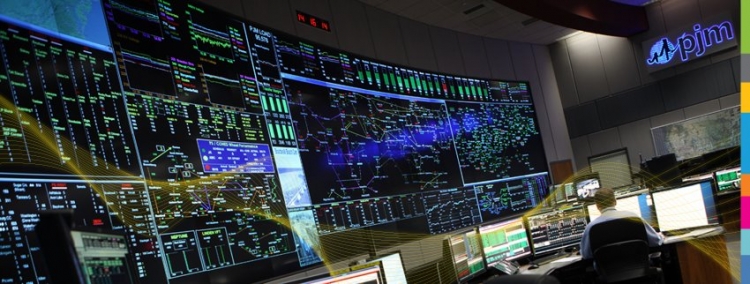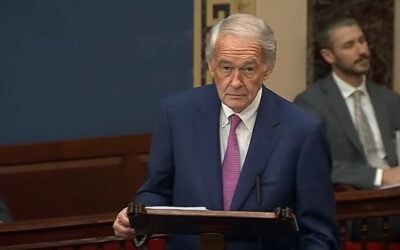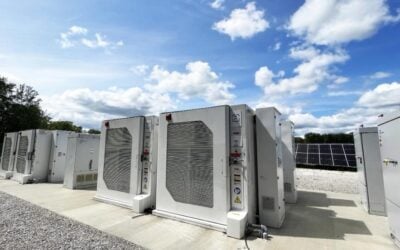
Two bills that have been introduced in the US to support and accelerate the development and deployment of energy storage are enjoying cross-party support and look likely to pass unopposed, an analyst has said.
The Better Energy Storage Technology (BEST) Act and accompanying Promoting Grid Storage Act of 2019 were introduced just over a week ago by two groups of US Senators, on both Republican and Democrat sides of the Senate.
Enjoy 12 months of exclusive analysis
- Regular insight and analysis of the industry’s biggest developments
- In-depth interviews with the industry’s leading figures
- Annual digital subscription to the PV Tech Power journal
- Discounts on Solar Media’s portfolio of events, in-person and virtual
BEST would “support grid-scale energy storage research and development and improve the efficiency of the nation’s electric grid, while helping to align research efforts on energy storage technologies,” a release from the office of Susan Collins, the Republican Senator of Maine who authored the bill along with six others, said.
“Next-generation energy storage devices will help enhance the efficiency and reliability of our electric grid, reduce energy costs, and promote the adoption of renewable resources. Our bipartisan legislation would help catalyse the development of this technology that holds great promise in the fight against climate change by supporting clean energy generation, including wind and solar,” Collins said.
What each bill would do
BEST would focus grid-scale energy storage R&D onto a variety of possible technologies and applications:
- ‘Highly flexible power systems’ with six hours’ storage duration as a minimum, with a lifetime of 8,000 charge and discharge cycles at full output, over a 20-year operational lifetime.
- Long duration storage systems with 10 to 100 hours of storage duration, again with 8,000 or more cycles available at full output, for a 20-year lifetime. Also long duration 10-100 hour systems that can handle 1,500 cycles are being targeted.
- Seasonal energy storage that can reach durations of weeks and even months.
- Support for up to five demonstration projects that could advance the commercialisation of grid-scale storage technologies.
The programme would also be authorised to spend US$60 million each year between 2020 and 2024, while also directing the US Department of Energy to develop cost targets and a strategic plan for energy storage, accelerating testing and validation of associated technologies through the US’ National Laboratories network. Finally, the BEST Act would also require research efforts to be coordinated and aligned to produce “commercially viable storage systems”, with the DOE, National Laboratories, federal agencies and end users all taking part.
Collins was also among those backing the other act, introduced by Senator Tina Smith and Representative Sean Casten. While Smith and Casten are both Democrats, once again the bill enjoyed bipartisan support.
The Promoting Grid Storage Act of 2019 would “boost research and development of cutting-edge technologies to increase energy storage capabilities for America’s electric grid and enable the expanded use of clean energy,” a press release from Tina Smith’s office said.
Smith made a statement similar to Collin’s own statement on the BEST Act, highlighting that the bill “will help significantly improve our collective efforts to store energy by increasing energy storage research and expanding the deployment of energy storage technologies”.
The 'Promoting… Act' would authorise US$1.05 billion in funding to be divided up over five years of the programme running. This would include improving the coordination and collaboration of DOE efforts in energy storage research, which Smith’s office described as “currently fragmented” across numerous different programmes. It would also fund grants from the energy department to help private and public entities to “expand their energy storage capabilities”, while also providing grants for piloting energy storage system projects that could take promising new technologies from the laboratory into the market.
Optimism vs dysfunction
The bills have a good chance of succeeding, Navigant Research analyst Alex Eller told Energy-Storage.news, although given what appear to be high levels of “dysfunction” within the government and the administration of Donald Trump, it would be easy to imagine their actual passing could take some time.
Both bills are “well designed to actually be approved”, Eller said, not least because both are “relatively modest in their goals and budgets” but also because they have gained approval from both parties as well as from Senate and from the House of Representatives.
“Given how divided the two legislative bodies are, I think it’s a great sign that these bills have support in both groups and both parties,” Eller said.
It isn’t clear what the schedule would be for the bills to be voted on however and therefore it is not clear when they would be approved, the analyst added, before adding his own caveat that there could be “major delays before this and any other meaningful legislation actually progresses” due to what appears to be dysfunction at the upper levels of the administration. Despite his take on the bills themselves being firmly positive, Eller admitted to pessimism over this last aspect of the undertaking.






